Attention: Part 1
Your attention is like an excited puppy around new people. It’s pretty hard to get it to sit still and behave. If you do manage to settle it in one place, it doesn’t take long before it becomes distracted and starts bouncing around again. In this post I examine what attention is, with the help of a simple animation and look at why it is so hard to be in command.
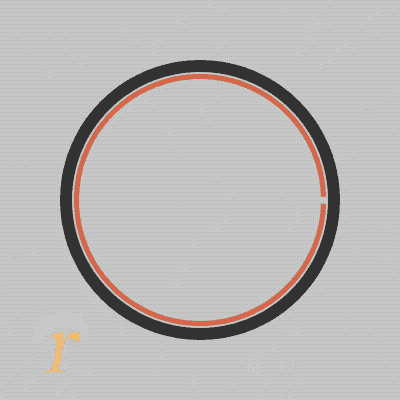
I’ll be using a visual tool to illustrate this: the Awareness Wheel.
What is Attention? It is bringing your conscious mind’s abilities to bear on a particular task, thought or idea. On its own, your brain will find plenty of busy-work to keep itself occupied and distracted, and to meet your immediate needs. But deliberately pulling that attention onto some new subject of your choosing is not easy. It is not guaranteed that your choice, out of all other tasks, will be the one in the spotlight.
A Hood with a Hole
Could you focus on more than one thing at a time? You could cut more holes in the hood, but actually this does not help. You find your processing is still limited to one thing at a time, not because of how many holes there are, but because of your limited resources to look through more than one hole.
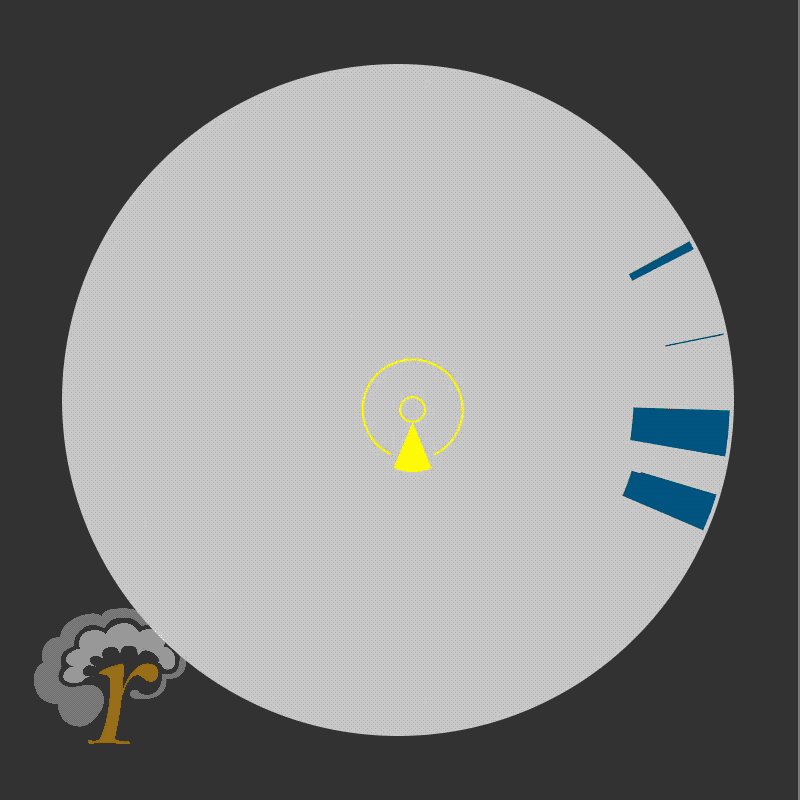
Level 0: The Awareness Wheel and attention
How Many Thoughts Can You Hold?
The idea of having a limited number of thoughts we can hold onto or be aware of consciously at any point in time, is aligned with a concept called Working Memory. This takes us into a whole other topic that we should stay out of for this post, as it is not simple enough to be summarised neatly.
Let’s just accept the idea that a typical human mind can keep hold of between 4 and 7 “ideas” or thought chunks (sometimes more that 7) for short periods. With training some people can get even higher for specific tasks.
In our little model here, the Awareness Wheel, we will assume exactly 5 independent thoughts can be held in the wheel for a short period.
The Default Mode Network
Another idea we cannot go into in depth here is the default mode network. Our waking brain has two basic modes of operation, executive mode, where we are using our cognitive controls to direct our mental resources against tasks we consciously choose. We also have a separate mode, the default mode, in which we daydream, or in some way allow our brain to wander, and to make its own choices about what to process. There are theories that background problem solving and creativity emerge from the default mode, but this is disputed by some. It is pretty accepted to say that we have these two modes of thought.
The model here distinguishes between us using the mouse to direct our attention (executive mode) and allowing it to rest or to wander (default mode).
Attention and Tasks
- Make a decision, perhaps choose which route to take to work.
- Solve an everyday maths problem, like working out a budget for a trip.
- listen (really listen) to a loved one tell you about their day.
- check your phone for notifications/alerts.
- Read a book.
- Chop an onion for your evening meal.
Level 1: Fixed or Fidgety?
The measure for efficiency has two components:
- A grey bar that rises and falls according to how efficiently you are processing thoughts, and
- A pale blue graph that traces the history of recent efficiency level. This becomes more useful later on.
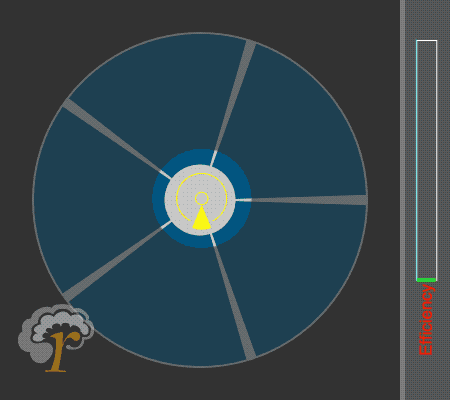
Thinking about Thinking
Unlike the illustration above, your brain actually needs a bit of a warm up each time you switch tasks, even if you are switching quickly away and then back. In the instant you switch to a new task (or return to a previous one), you start with a low level of efficiency. As long as we stay focussed on that task for a while, the efficiency grows, until there you are fully engaged with it. The very second you are tempted by a new, potentially exciting task, or switch to a previous one, you lose the momentum you had in the first task, and start again on the new task. The result of this is that switching tasks has a penalty, in that you make less progress in the same time compared with just staying focussed.
Level 2: The cost of switching
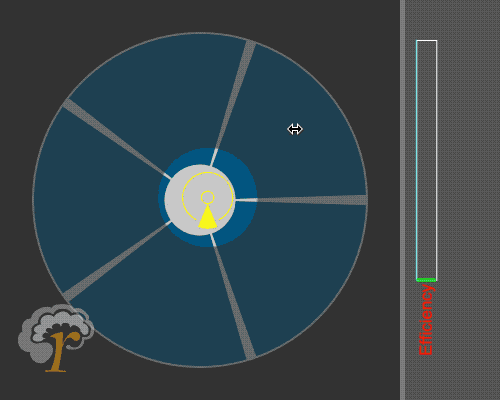
Level 3: Boredom
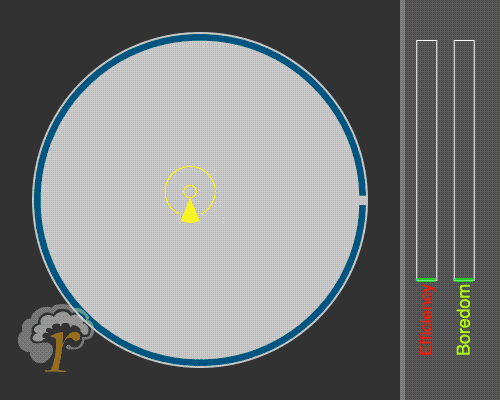
In the zone
Level 4: Novelty and Neglect
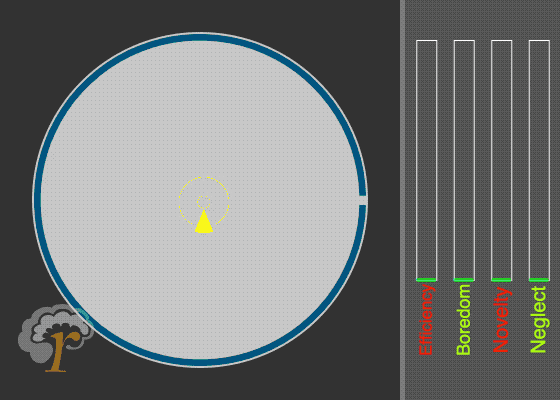
FOMO - Fear of Missing Out
Another way of describing the need for novelty, and perhaps a negative consequence of it, is the Fear of Missing Out (FOMO). It’s a sense that after weighing up the most useful, rewarding thing that you can be spending your time and attention on right now, there could be something even better, just outside your awareness. This leads you to explore the possibilities, and spend your attention checking for and evaluating other possible tasks, looking for the something better. At its worst it can prevent you from settling and committing to any one thing, or even if you do, feeling unsatisfied by it, feeling sure that you missed out on a more rewarding opportunity.
While this is not new, the permanent availability of myriad choices through mobile devices and social media brings more possibilities to the edge of our awareness, and within reach of consideration than ever before. It can take a certain strength of mind to resist the urge to check out all the possibilities, just in case there is a better one, and allow yourself to focus on what is in front of you now.
Multitasking
There is no doubt that our brains do many things at once, most of which we are unaware of. But when it comes to your conscious mind and your ability to share your attention among several things it gets more doubtful. If you play a musical instrument, play video games, or drive a car your do many, pretty sophisticated things at the same time. But part of why you are competent is because you have trained yourself to perform elements of each automatically. You can turn your attention to any one aspect, and the rest will carry on skilfully. When you are a beginner this is not the case, and you need your full attention on one part at a time, neglecting the others and making mistakes.
This can make us believe that we can multi-task pretty effectively. But experiments have shown that when it comes to tasks that require executive attention, it’s all or nothing. This premise sits at the centre of the attention wheel model used here. What we can so it switch quickly between tasks, relying on our working memory to hold them while our attention shifts temporarily to another job. There is a cost in efficiency, and a lot of the time it’s a price we are willing to pay.
Even if it is true that no-one truly multi-tasks, the ability to switch effectively and return to a task (our cognitive control) does vary quite a lot.
Level 5: Bottom up thoughts
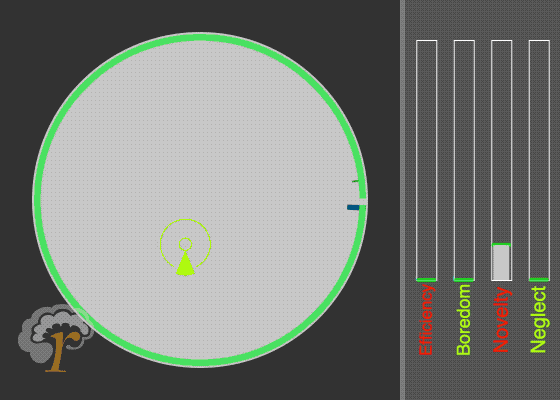
Level 6: Complete and Abandoned Thoughts
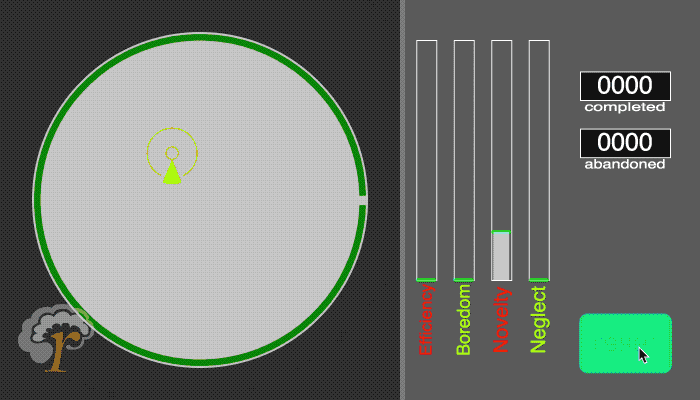
Pushing Your Buttons - how advertisers get to us
Level 7: Unconscious awareness
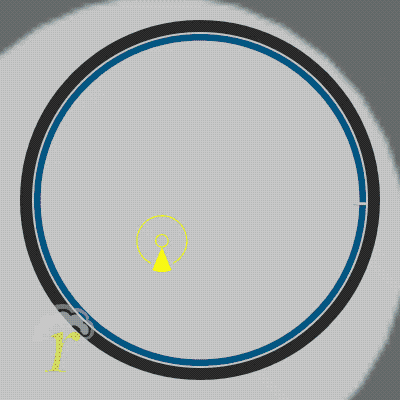
The Awareness Wheel comes together as a game, where you can try different techniques to maximise efficiency, complete tasks, keep things interesting and avoid abandoned tasks.
The Attention Game
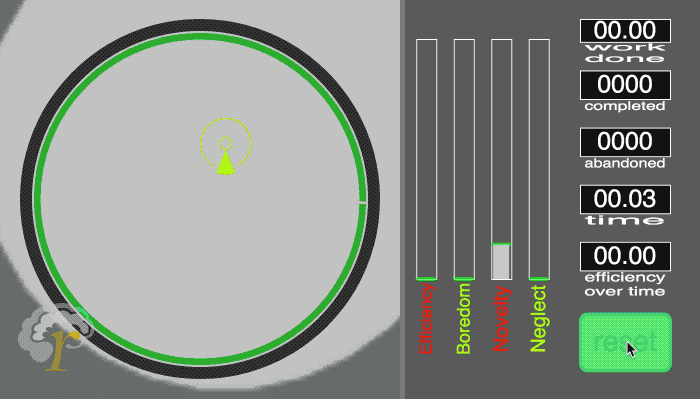
Further Thoughts
Super-Power and Weakness
How big is your attention?
I keep reminding you in this post that you only really have one beam of conscious attention that you can shine on one task at a time.
The other dimension to consider is how long you can keep it focussed. You are constantly evaluating what is the most effective thing to be looking at, and it can take real conscious discipline to fight the urge to check some of your favourite distractions. In fact just receiving a buzz in your pocket or an audible ping from your phone means you have already lost command of that precious attention. You would do well to turn off as many automatic, environmental and human distractions as you can, and give yourself a time window (say 20-30 minutes) at the end of which you promise allow yourself to scratch all those itches. Then honour that promise. There are tools that help you manage distraction free working like this, or you can just setup your own good habits. Trust me, your brain will not do this on its own.
Twenty minutes many not seem very long but some experiments have shown that 2-3 minutes is the longest people of all ages can go without first signs of novelty seeking. Whatever the time scale is, boredom and lack of novelty will drive up the urge to seek some new distraction, and increase your temptation to respond to some bottom-up event.
Given that it takes discipline and willpower to maintain conscious focus on your higher goals, it’s worth mentioning the idea of ego depletion. This is a theory that your ability to fight urges is itself finite and variable, so that after successfully resisting temptations a number of times, your resolve may get weaker. It will also be affected by factors such as hunger, tiredness, and time of day. It is not a robustly proven or measured idea, but there are elements that seem to ring true. Sometimes you can walk past the cake, or ignore the alerts on your phone, and sometimes you just can’t.
Pay Attention
Attention does have a kind of currency. Without a doubt, our brain likes to account for how it spends energy very closely. It will do anything to minimise the time and effort put into getting a job done, and resents pushing something into the super-expensive conscious mind without a pretty good reason. For you (the conscious you) the reason might be really valid (perhaps revising for an exam), but your brain has its own way of evaluating, much more closely aligned to the drives for basic human needs (such as food, warmth, safety, social validation, sex, or security).
For you to push some other task past past these urges, and that does not tick one of those boxes, is considered to be a pretty unattractive prospect to your brain.
You should respect this whenever you ask or expect someone to pay attention to you. It may be for their brain (even if not for yours) a pretty expensive investment of resources. Make it worth their while.
What advertisers, app designers and other agents have got pretty good at is disguising their (probably not very important) agendas as something that does look and feel like it is relevant to one of your primal needs, and sneaking it into your attention.
Attention well spent?
If it’s so hard to get something under the attention spotlight, what counts as time well spent? Is it a big task or two completed, hundreds of little trivial jobs crossed off, or maybe just satisfying the itch for new things and defeating boredom? The answer is a healthy mix of all of them as far as your brain is concerned
You see by the later higher of the Attention wheel that we are keeping score of many different things, often in conflict with each other. For a happy brain, we need to mix and match a good score in one area, and the corresponding drop in another, with a swicth in prioirties from time to time. Everything in balance and moderation.
Play the advertisers' own game
Left to its own devices, your brain might well occupy your attention with easy, low-hanging busy work, and follow the lure of shiny adverts, or tempting clickbait in your social feed.
So maybe the secret to getting some of your bigger, trickier tasks squeezed into your attention’s agenda is to make big tasks look and behave a bit more like little, attractive tasks, appealing to the same success buttons that those distractions target.
You can, for example, break a big, daunting task into small tasks, each with a definite end. Make sure the tasks use skills you know you have (so that you can get started without thinking too hard). Reward any time you do spend on these tasks in small ways (maybe by giving yourself permission to enjoy some of the naughty but nice distractions you are holding back). If you forever deny your brain a little reward, they just get more tempting. Remind yourself why you are putting in this effort – give your brain a big, colourful, sweet-smelling fantasy of what it will be like if you achieve it. Your hidden brain really cares about this stuff. Think about the most ridiculously overblown, poetic, aspirational visuals in a perfume or car advert and you’ll get the idea. But it has to be something that appeals to you.
We don’t talk about it much here but there is a whole system of rewards, anticipation of future rewards and scorekeeping of how good (or not) something turned out to be. Your brain uses these to make any decision about what to do out of a set of possibilities. That’s a topic for another day. For now the trick is to make your brain want the same things that you do, and give it a little of what it needs to keep it happy.
Other Perspectives
Alternative views
Our brains do not all work the same way. Children’s attention will be different to an adults for example. The cognitive control so important for getting top-down command of your attention is largely powered by the prefrontal cortex, which does not finish developing until mid-twenties in most people. That said, younger people have much faster response to the cognitive control that they do exercise, so their ability to flit between tasks is greater than those of an older age. The Distracted Mind book, discussed below, cites studies and findings in this area. These mental abilities decline with normal ageing throughout our lives.
You may be predisposed to highly organised thinking, or you may be one of those people who easily drift off into day dreaming, allowing your default mode to run things more often than others.
You may have tendencies characterised by Attention Deficit Hyperactivity Disorder, whether diagnosed or not. You may simply find that your appetite for novelty is greater, and ability to command top-down tasks onto your mental agenda is lower than others. While this can lead to difficulties in highly regulated environments (like school), these tendencies can help those in creative, adventurous or entrepreneurial pursuits be less inhibited, and more open to opportunities.
A large part of the findings in the Distracted Mind book, and the studies on which it is based, are around what you can do to enhance our cognitive control – that is our ability to be in command of our mental agenda more of the time. They do find that certain practices can help. These include:
- Managing how much and when we allow mobile and social media distractions to be available to us
- Taking breaks and walks in natural spaces
- Practicing certain kinds of video games that have competition for mental resources
See the section below for more information on the book and the work of the authors.
What can go wrong?
Some mental illnesses and disorders are characterised in part by a sense of being overwhelmed by an awareness of everything that is not getting done, and unable to actually do any of it. Part of this is a kind of choice paralysis, where there seems to be no filter holding back that, normally subconscious monitoring of “everything else”. All of the tasks that we are aware of may seem undoable, un-start-able, and daunting. It is likely that our most basic mental habits will fill the awareness wheel with thoughts that seem to compensate for low mode, like the appealing prospect of staying in bed, or avoiding contact with others where your sense of low self worth would be more prominent (at least to yourself), or perhaps the temptation for unhealthy eating, just so your mind can get a buzz from the great sugary , or salty taste.
Science and Sources
This article tries to avoid the language of brain science (without straying too far from it’s path) and uses a visual model that relates your own experiences to what science thinks is going on in your mind and brain. The science matters a lot though, and if you want to know more there are some sources here.
Further Reading
And a Little More Reading
And Even More...

